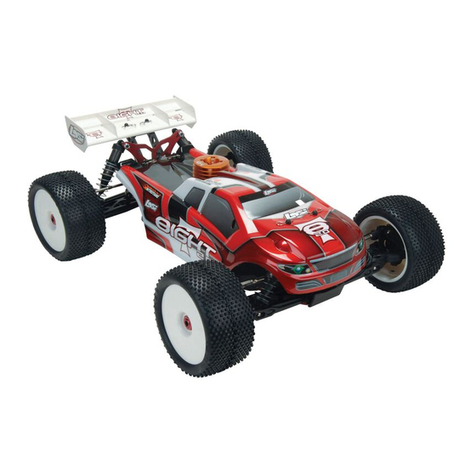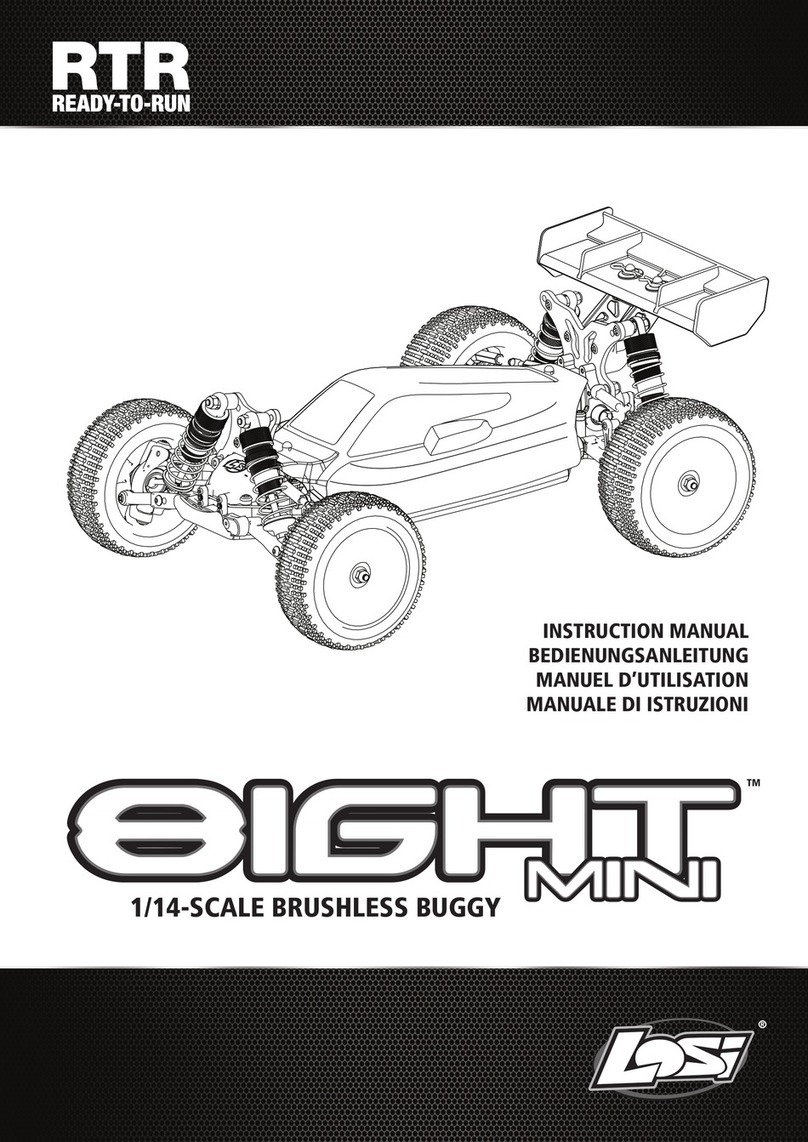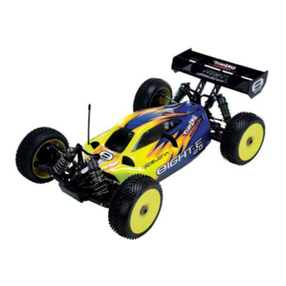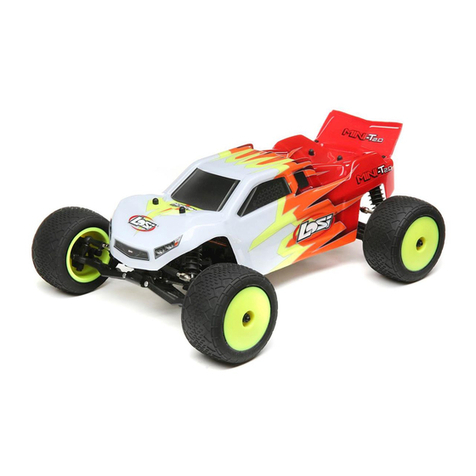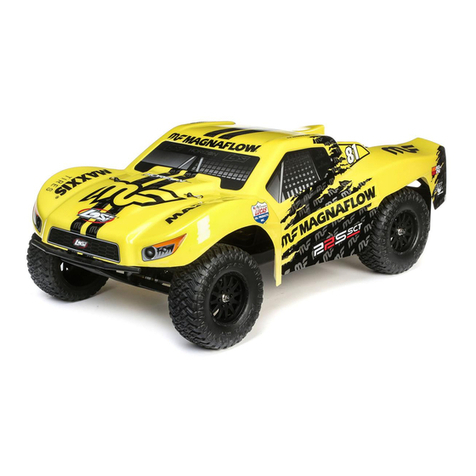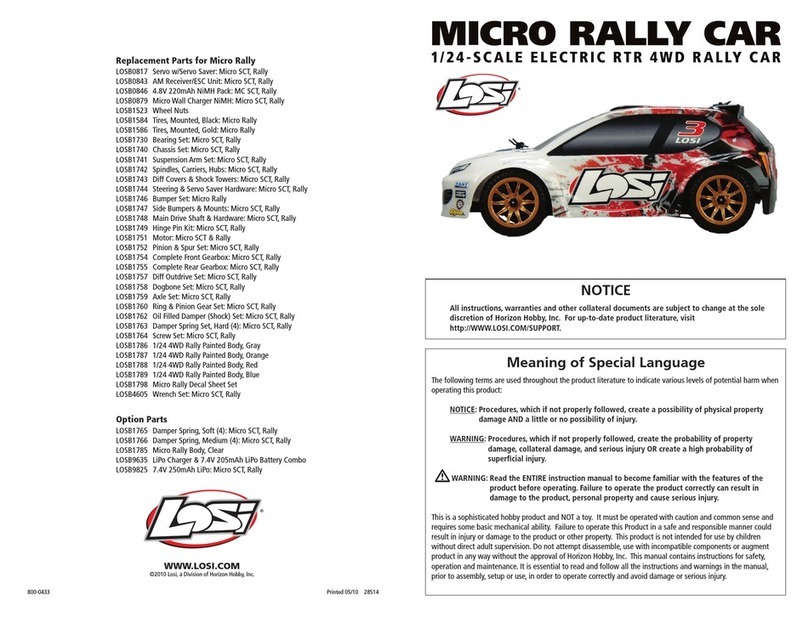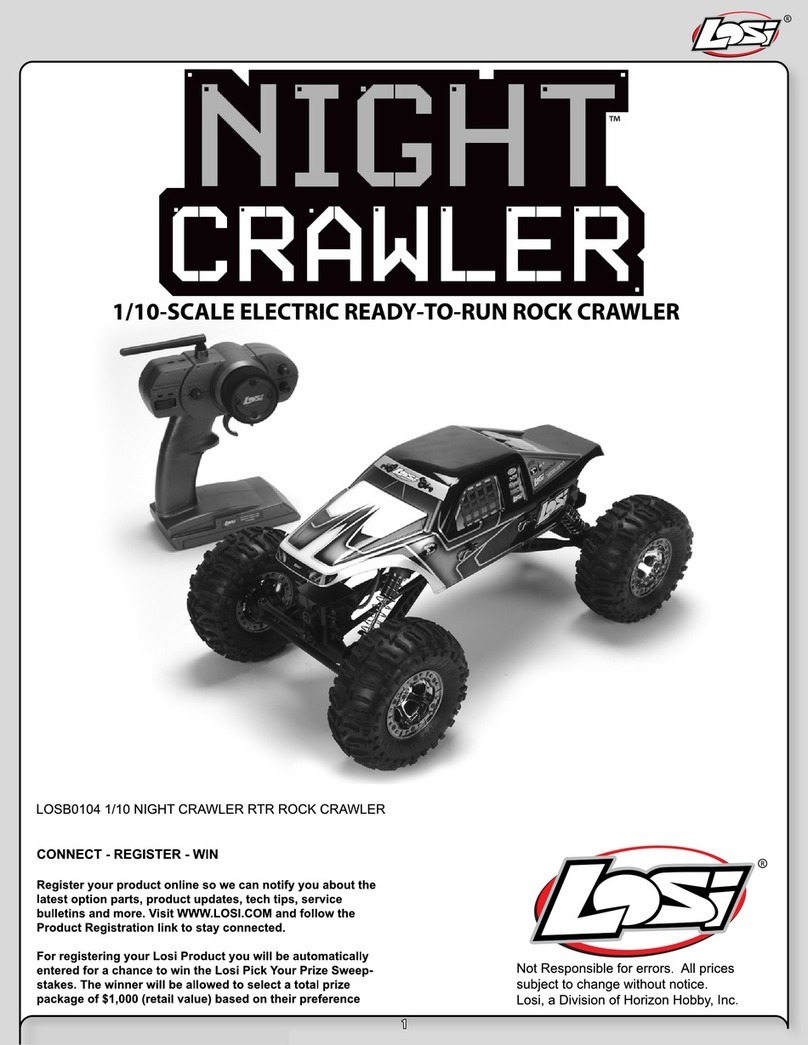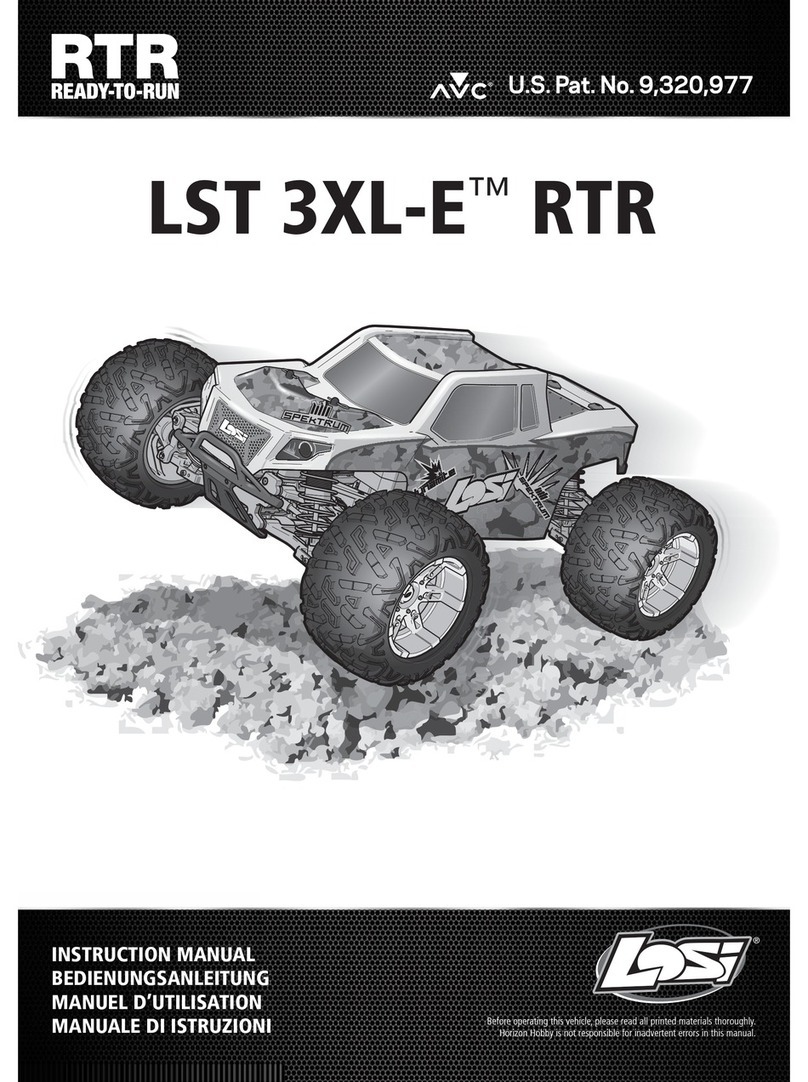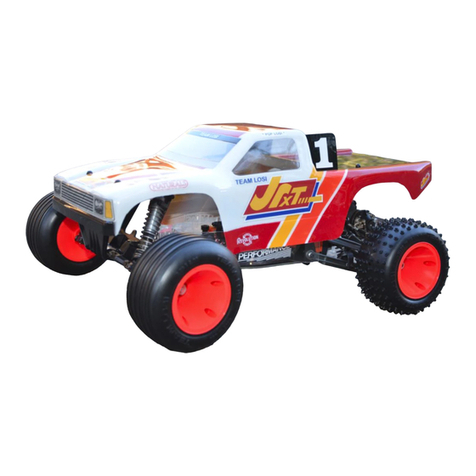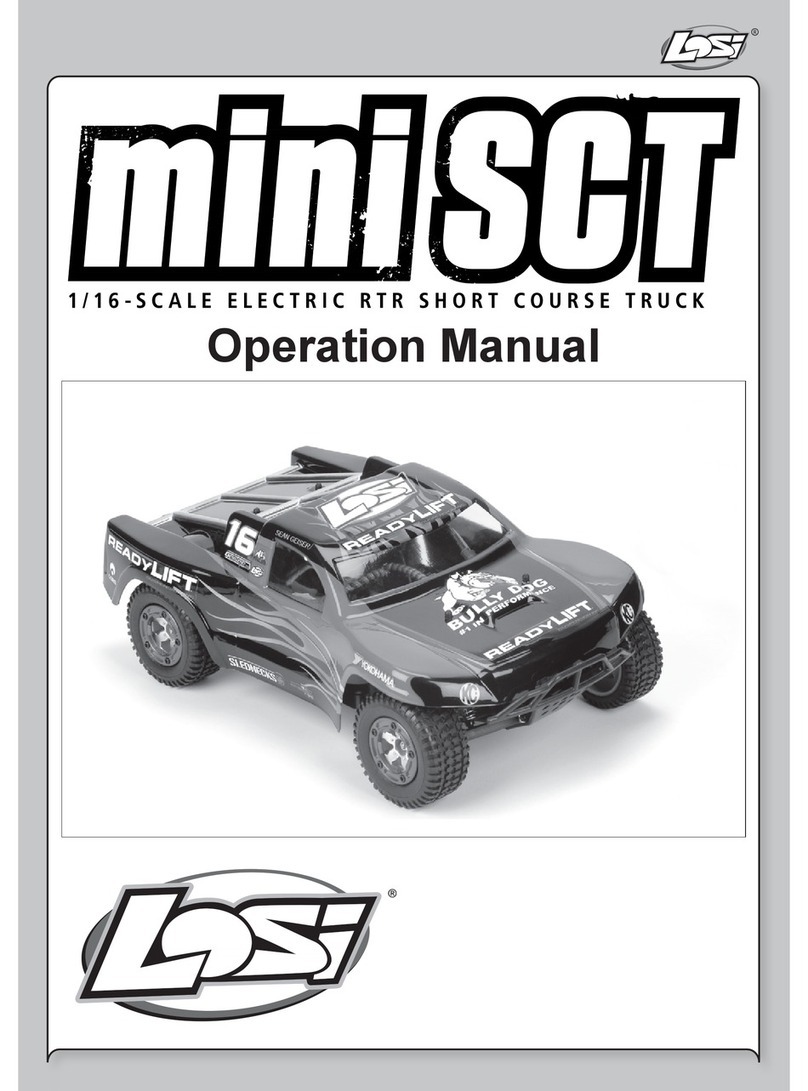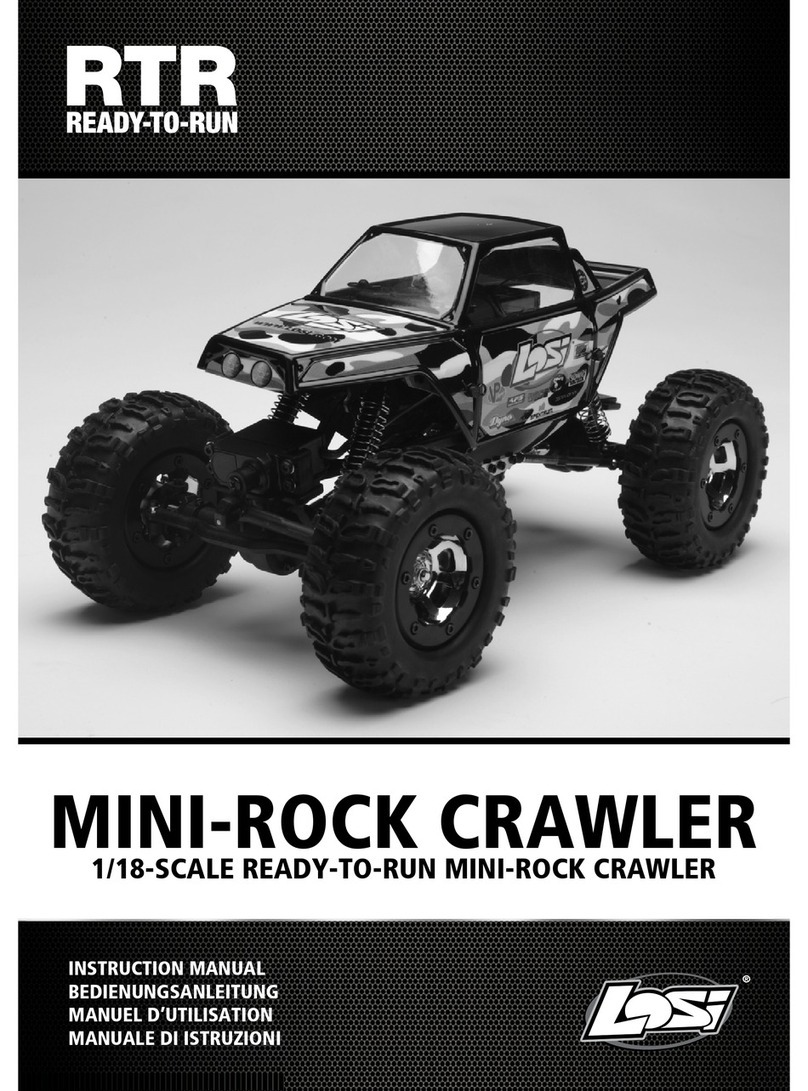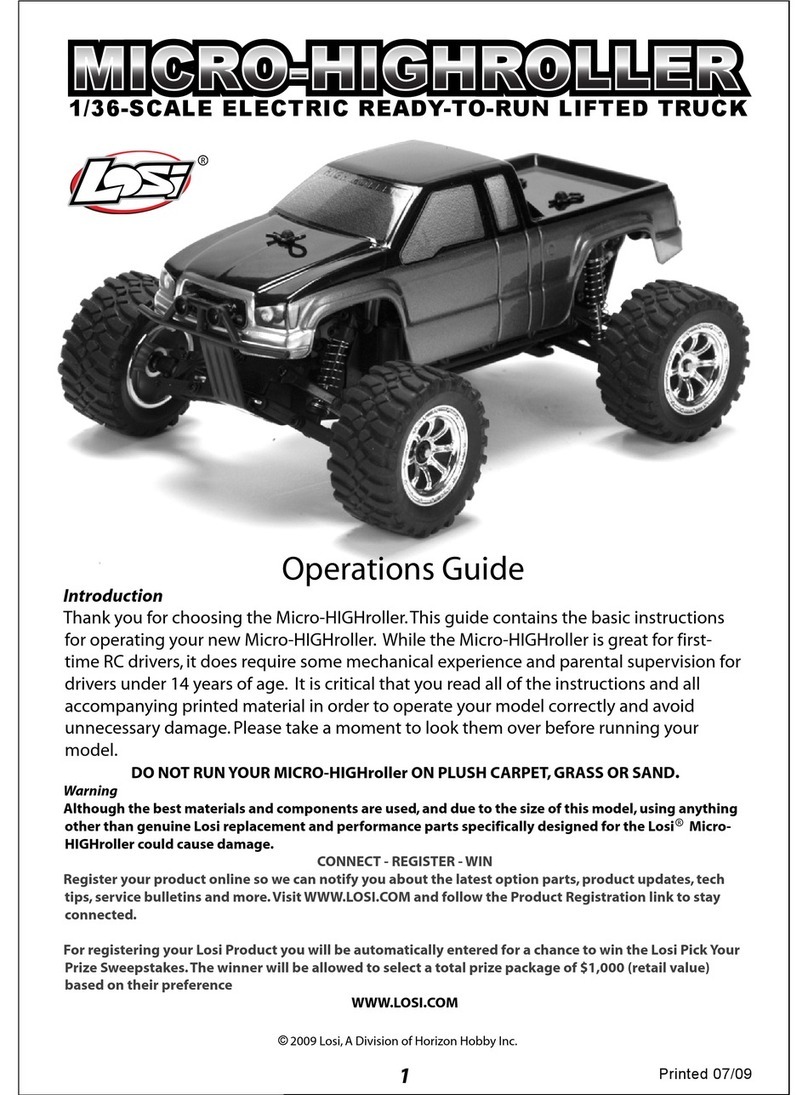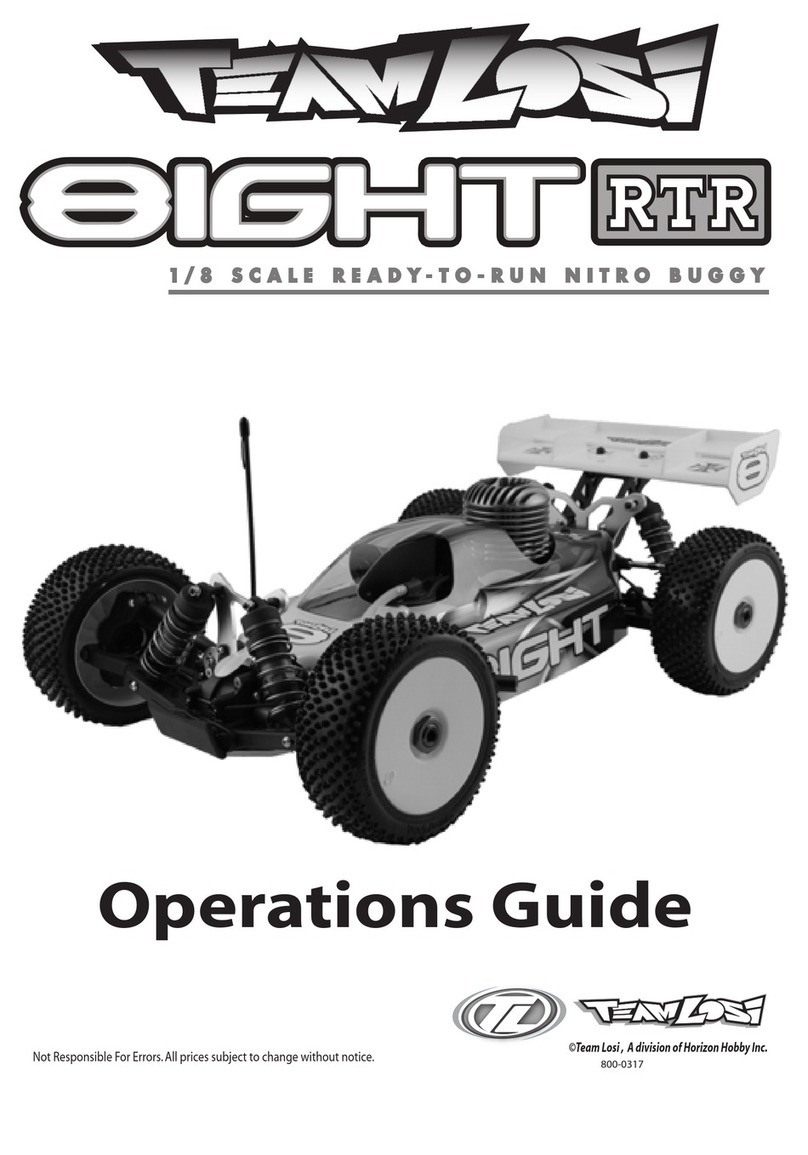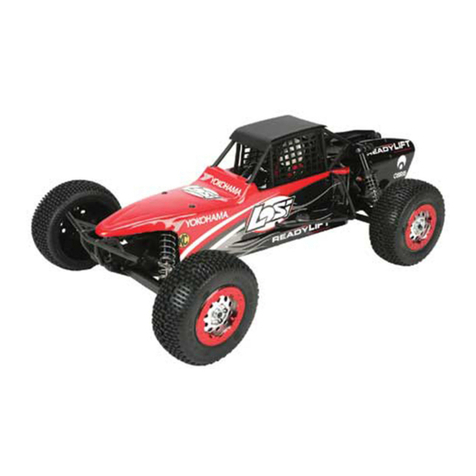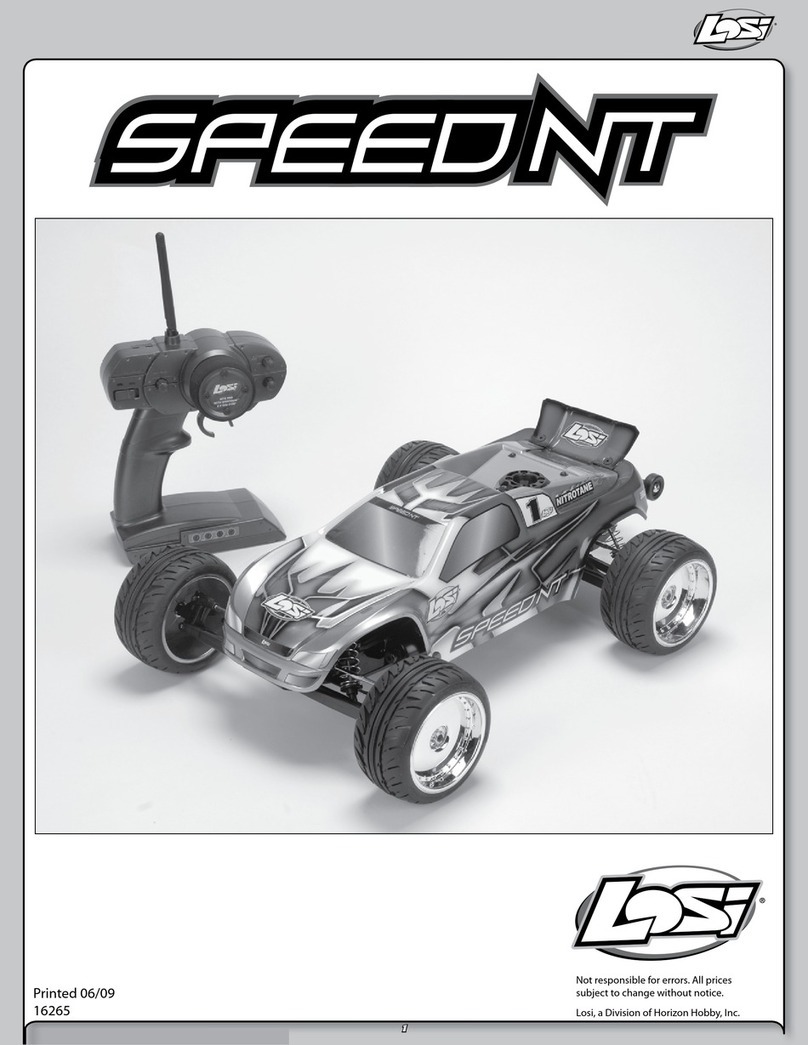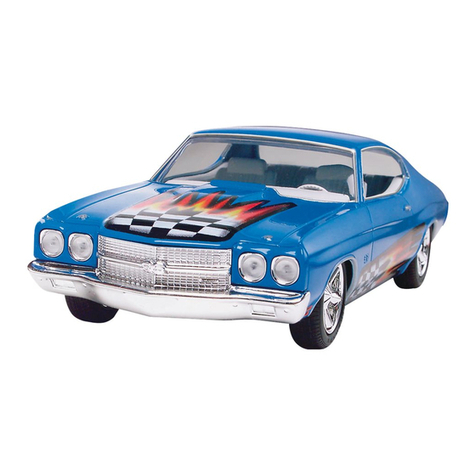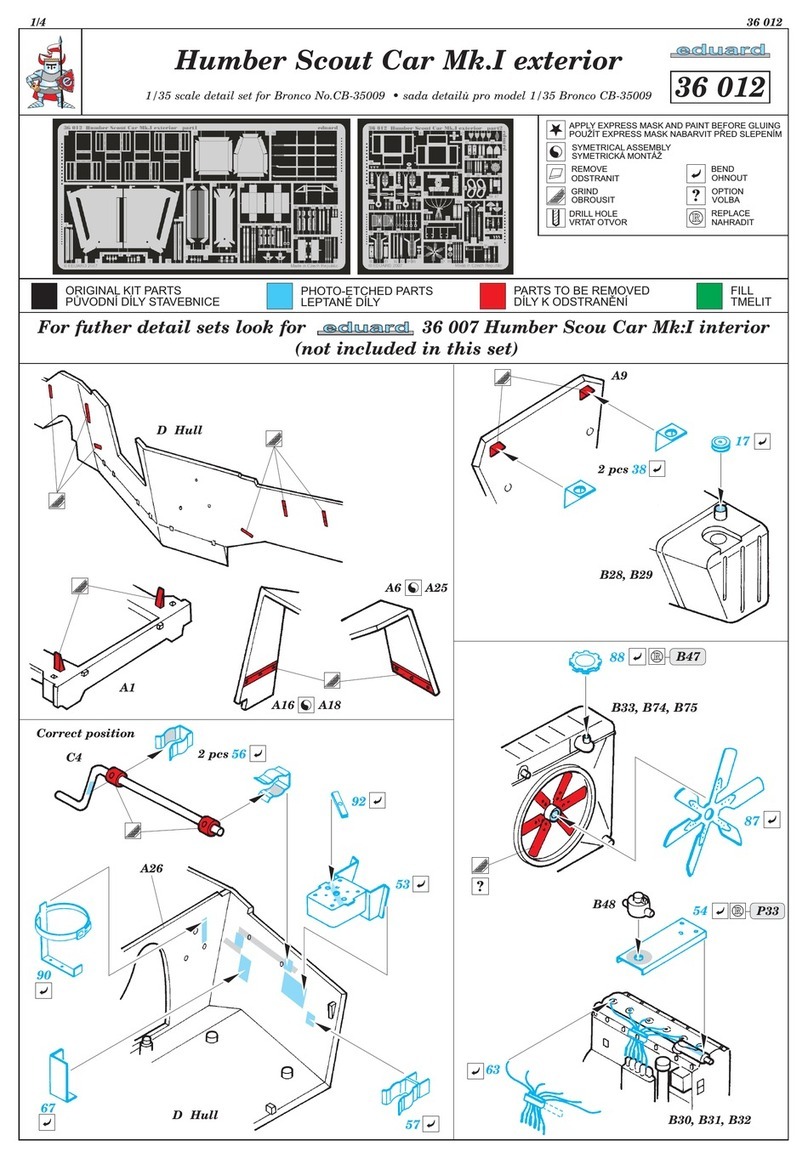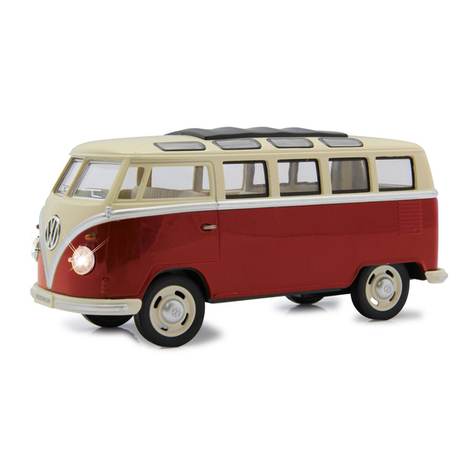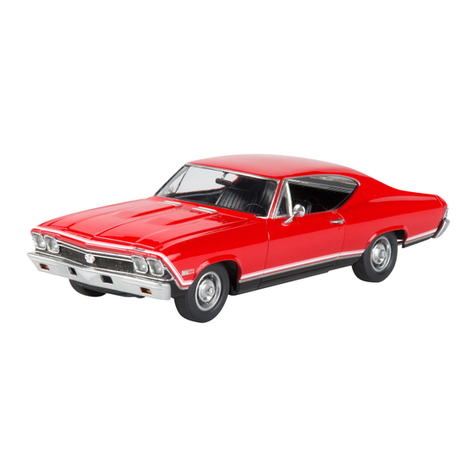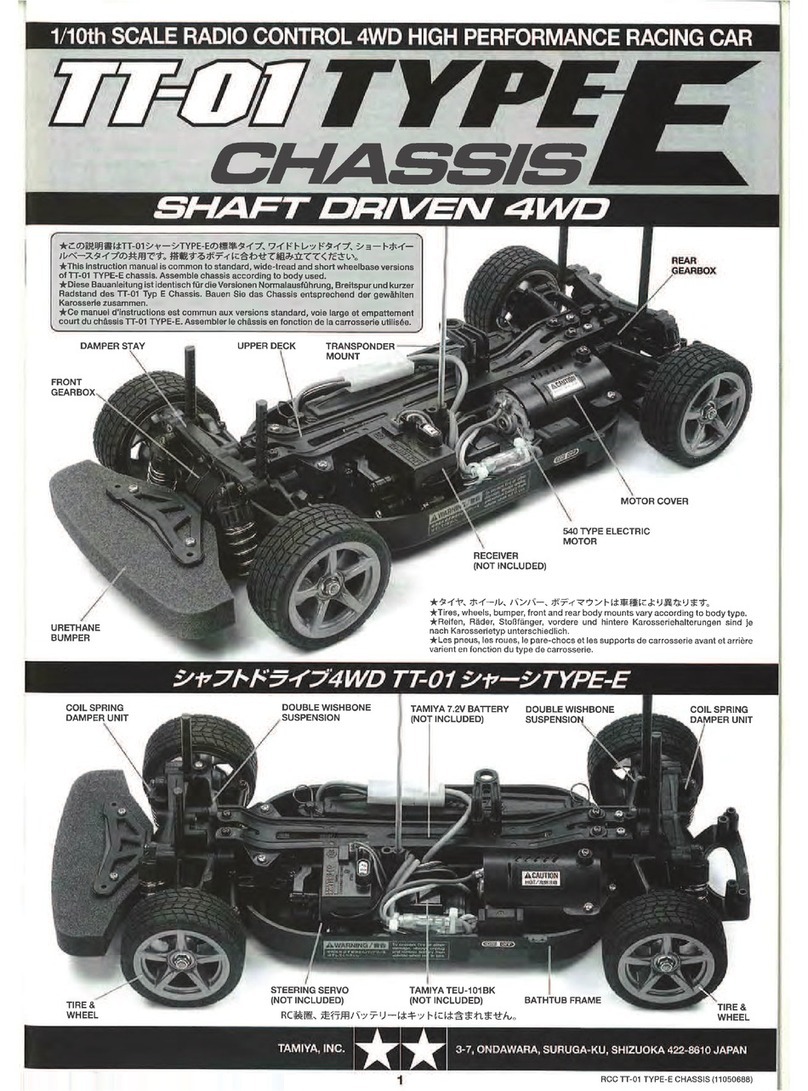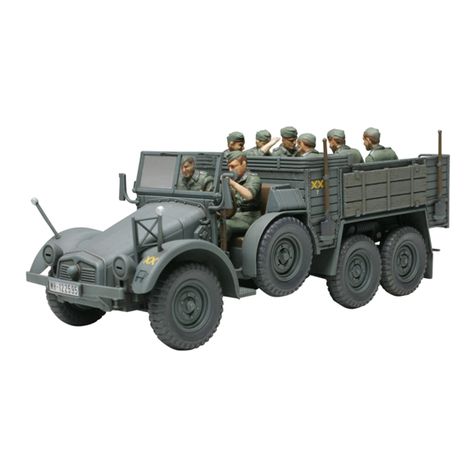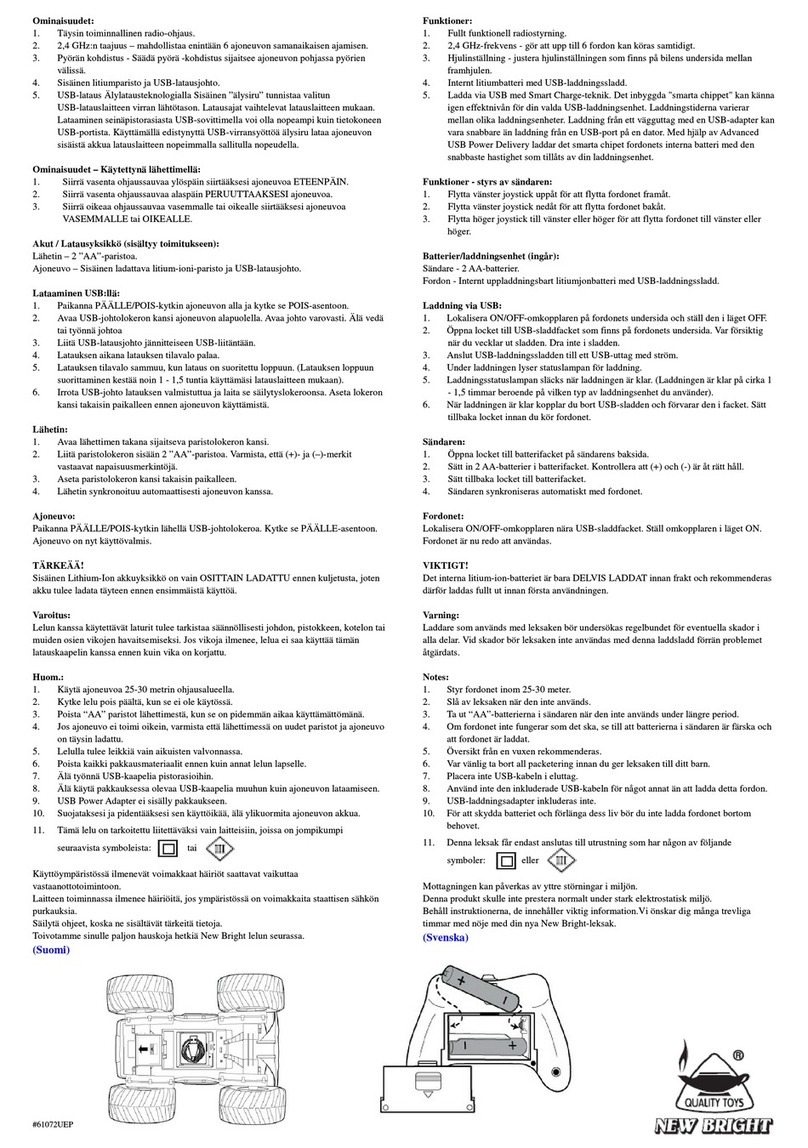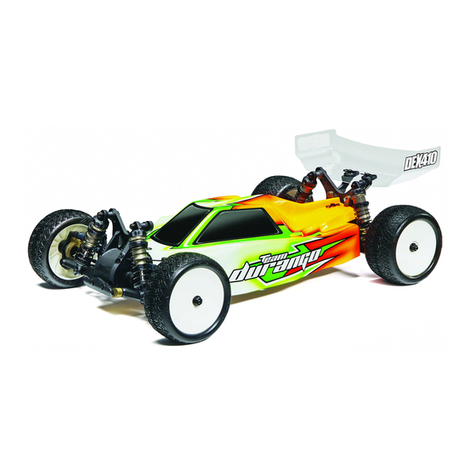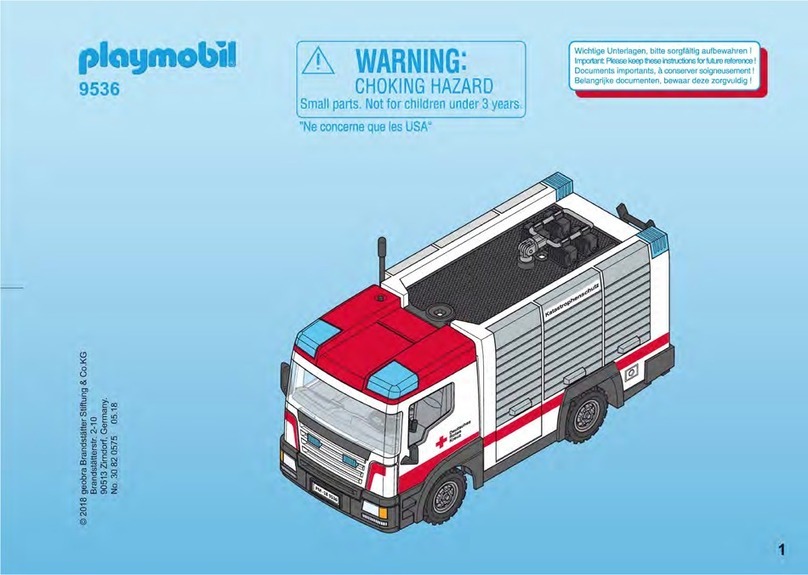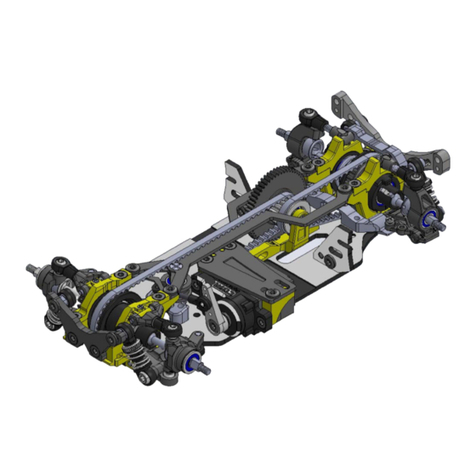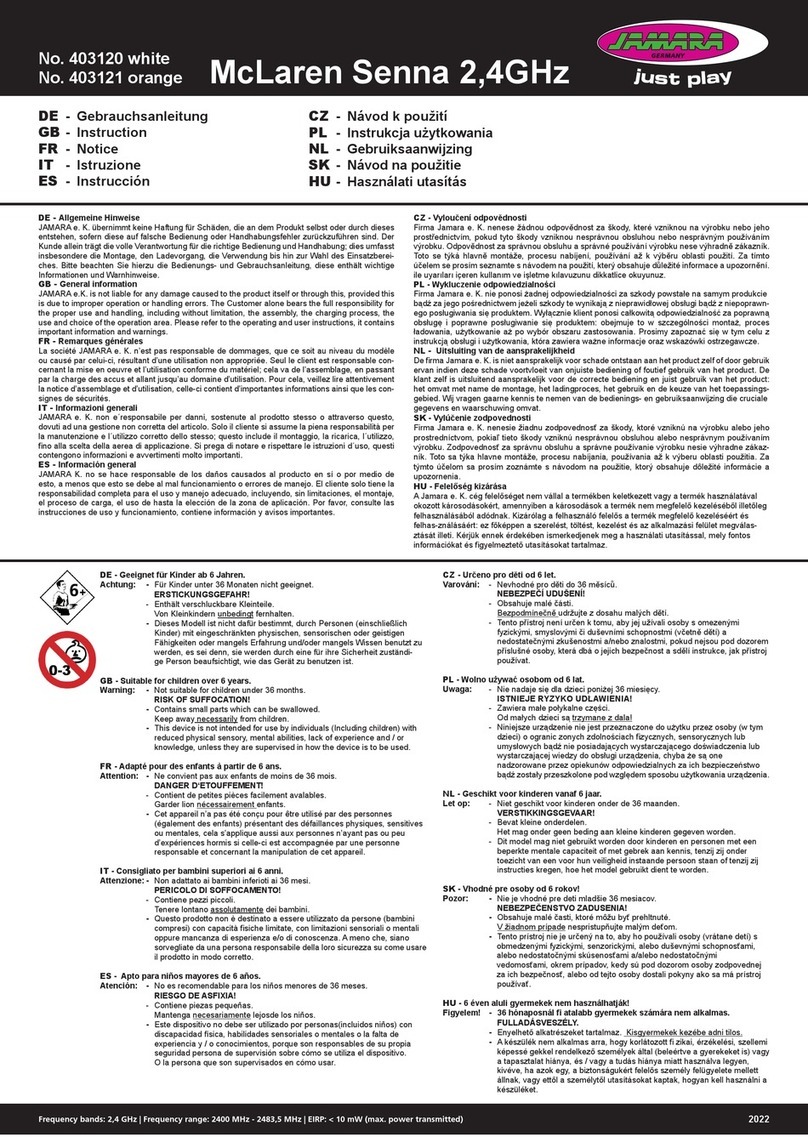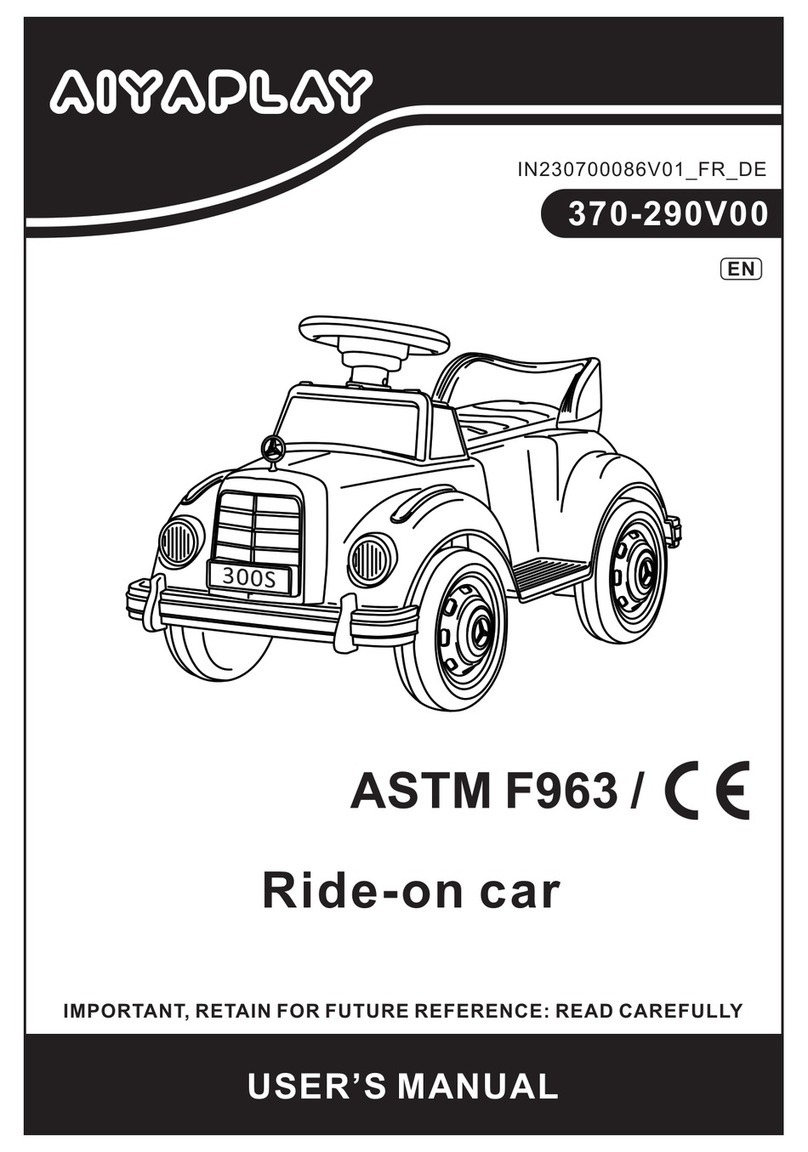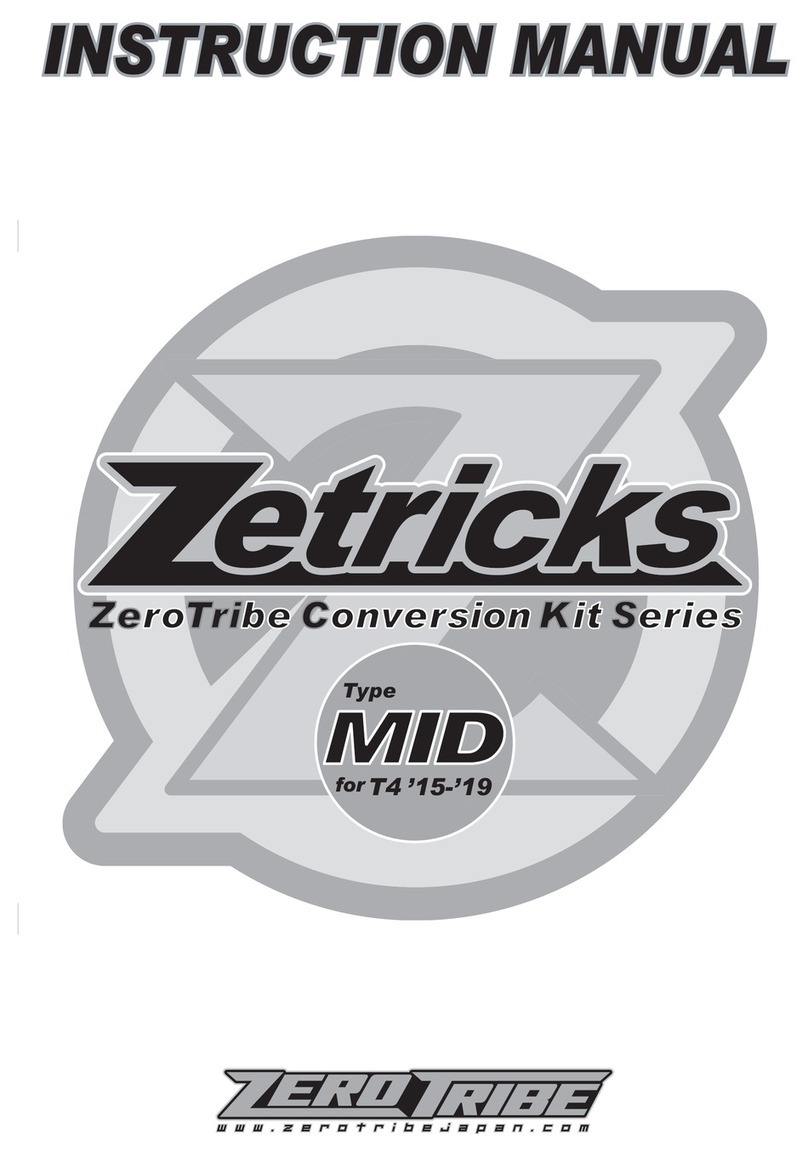
2
What to Adjust
When making chassis changes, you should rst decide where you feel the car needs to be dierent. This is commonly referred to as
changing the balance.”The L8IGHT comes out of the box with a relatively neutral set-up that favors neither the front nor the rear of
the model. This has been found to be easy to drive with great condence that the chassis will not do anything odd or unexpected. To
ne tune this or any setup you must rst decide if the front of the car needs to be adjusted or the back. You will want to work with the
rear of the chassis if the car enters the turn with the front end sticking, and tracking well, while the rear end either does not want to
follow, or simply doesn’t know what it wants to do. The opposite is true if the rear end seems to want to push the front end through
the corners preventing it from steering or if the front drives into the corner uncontrollably with so much steering and extreme reaction
that it is hard to control comfortably. As you will see there are several dierent adjustments that have similar eects on the handling.
You will nd the best adjustment will become a personal decision based on the “feel” that each of these adjustments yield. This also
reects on the “balance”referred to earlier. So the key is to try these dierent adjustments and learn what makes the car drive and
feel the best to you. Also don’t be surprised that after you become comfortable with a setup you nd that in time you are capable and
comfortable with a more aggressive setup. No matter what you decide to adjust never make more than one change at a time. If the
change you made works adversely, or doesn’t address your need, return to the previous position and try something else.
If You Get Lost
The development team has put hundreds of hours on the L8IGHT to arrive at the setup we put on the Race Roller. Think of this as
your base setup or “home”. If you get baed with your tuning and nd that you have lost the“handle”go back to “home” and your
base setup, as this will give you a comfortable handling chassis that you know to be reliable, consistent, and easy to drive. All of us at
Losi are sure that you will nd the L8IGHT Oval Racer to be the most versatile and easiest car to drive fast, with great consistency. The
specic information in this guide will help you to enjoy your L8IGHT, and racing it with the ability to make the changes needed to suit
both track conditions and your driving capabilities. Also don’t forget to check for the latest in setup and accessory parts information
by visiting the Losi web site at: www.losi.com regularly. Also note that there are many ways to setup a car. The rules we follow can work
inversely sometimes with dierent driving styles or dierent setup styles, so test for yourself and you will nd a setup that works right
for you and always remember that if you get lost you can always go “home”to your base setup.
Chassis Adjustments
Sway Bars are a exible connection between the right and left side of the suspension. They are used to keep the chassis at and
minimize excessive weight transfer and chassis roll. Losi provides sway bars in sets of three dierent thicknesses (LOSA1750) for both
the front and rear of the L8IGHT.
Front Sway Bars: The three front sway bars (Photo1) are .080in/2mm (light), .091in/2.3mm (medium), and .105in/2.66 (heavy). A lighter
front sway bar increases front traction o-power, but has less on-power steering. A heavier front sway bar decreases o-power front
traction making for smoother and more predictable steering when entering the turn, but oers more on-power steering on exit.
Rear Sway Bars: The three rear sway bars (Photo 2) are .092in/2.3mm (light), .1055in/2.6mm (medium), and .1205in/3mm (heavy). A
lighter rear sway bar tends to increase rear traction but decreases on-power steering. A heavier rear sway bar increases stability in the
middle of the turn and increases on-power steering. Heavier sway bars are also more stable on high speed, high-traction tracks.
Toe-In/Out is the relationship of the tires to one another. Toe-in is when the tires point inward (Photo 3), as they face forward and toe-
out is when the tires point outward (Photo 4).
Front Toe-In: (longer steering rods) decreases steering response entering and in the middle of the turn. This also increases on-power
steering at exit and may cause loss of rear traction.
Front Toe-Out: (shorter steering rods) increases steering response when entering the turn and increases straight line stability. Toe out
will also decrease on-power steering giving the car more forward traction.
Rear Toe-In: More rear toe-in increases forward traction and stability on-power and produces more o-power steering and less side
bite. Less rear toe-in: will increase the wheel base of the model and increase the top speed, on-power steering and side bite in the
middle of a turn. It will also decrease forward traction and stability under acceleration. You will never want to run rear toe-out.
1 2
